Answer Woman: What's on the concrete slab in French Broad River Park?
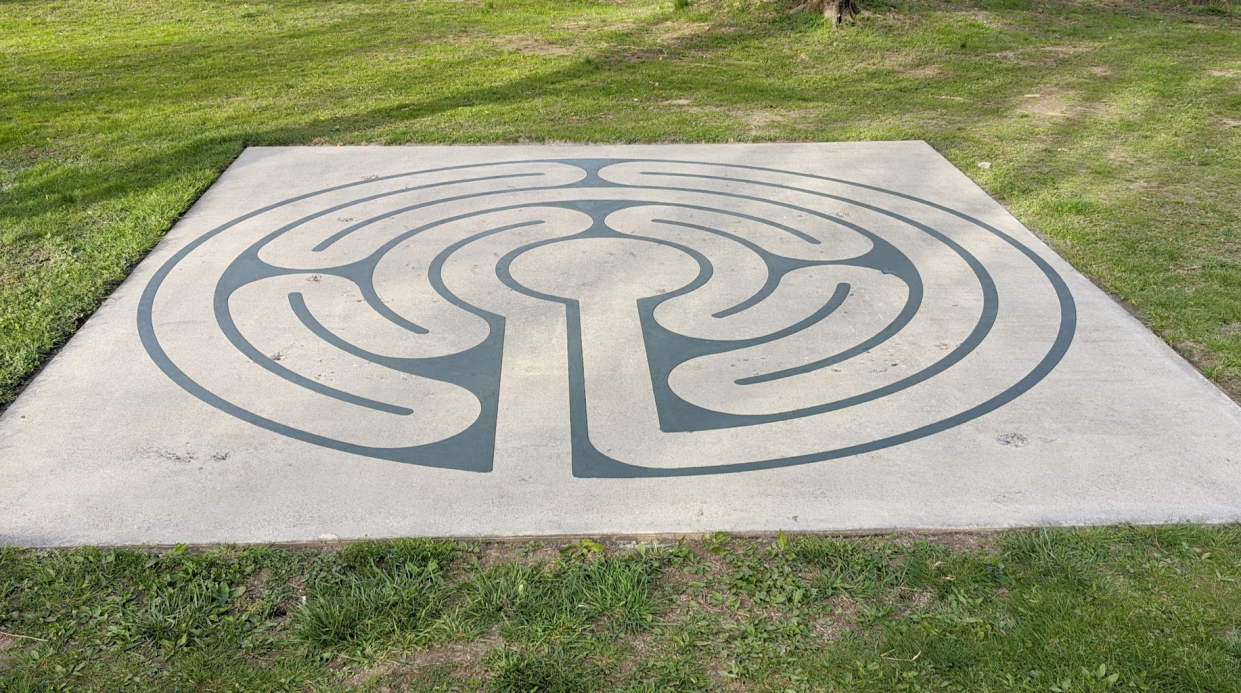
ASHEVILLE - Today's question is about a new installation at a public park. Do you have a question for Answer Man or Answer Woman? Email Executive Editor Karen Chávez at KChavez@citizentimes.com and your question could appear in an upcoming column.
Question: What is the artwork on the concrete slab at French Broad River Park?
Answer: Chuck Hunner, a 22-year Asheville resident, often jogs through the parks and greenway along the French Broad River with his running group, The Realistic Runners of Asheville. One day, he noticed a bare concrete slab embedded in one of the grassy areas at French Broad River Park, and his imagination kicked into gear.
Hunner, a professional labyrinth builder and designer with Golden Spirit Labyrinths, reached out to the City of Asheville with the idea to transform the blank slate of concrete into a symmetrical meditation labyrinth pattern that creates walking paths for individuals to follow to enhance peace of mind.
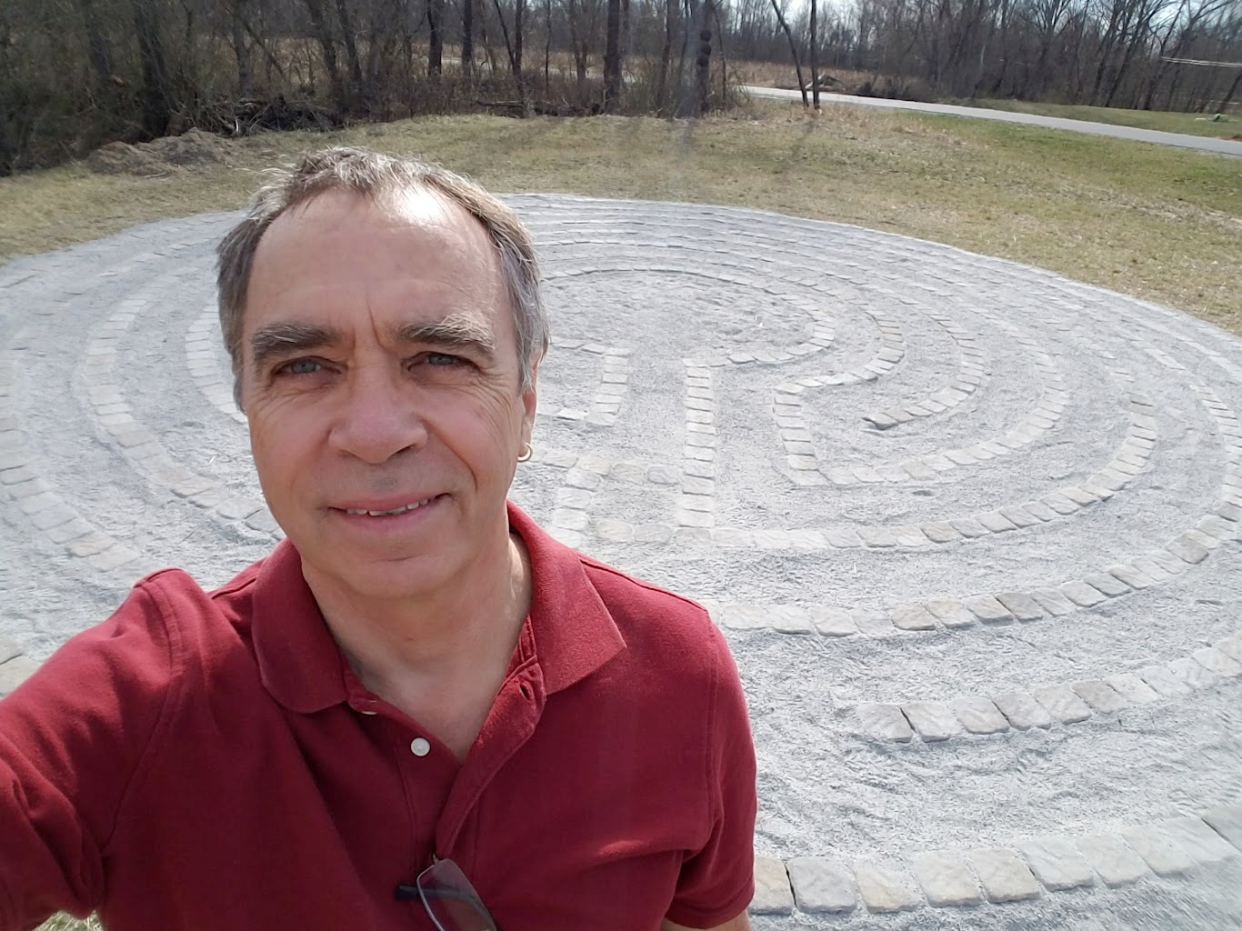
In March, Hunner gifted the city and visitors of the park with "Heart of Chartres," a five-circuit labyrinth inspired by the center of the 800-year-old labyrinth on the floor of Chartres Cathedral in France.
“A labyrinth is a single path. There’s only one path and no dead ends, no wrong turns,” Hunner said. “You come to the entrance, take a breath, and then walk forward and watch your thoughts as you walk.”
Hunner said part of the motivation to donate the piece was the work would happen sooner than later, as it often takes years for groups to vote, approve, and then raise money for the art commissions. He said it took less than two months for the city to approve the French Broad River Park labyrinth.
The value of Hunner’s donation is estimated at $8,000.
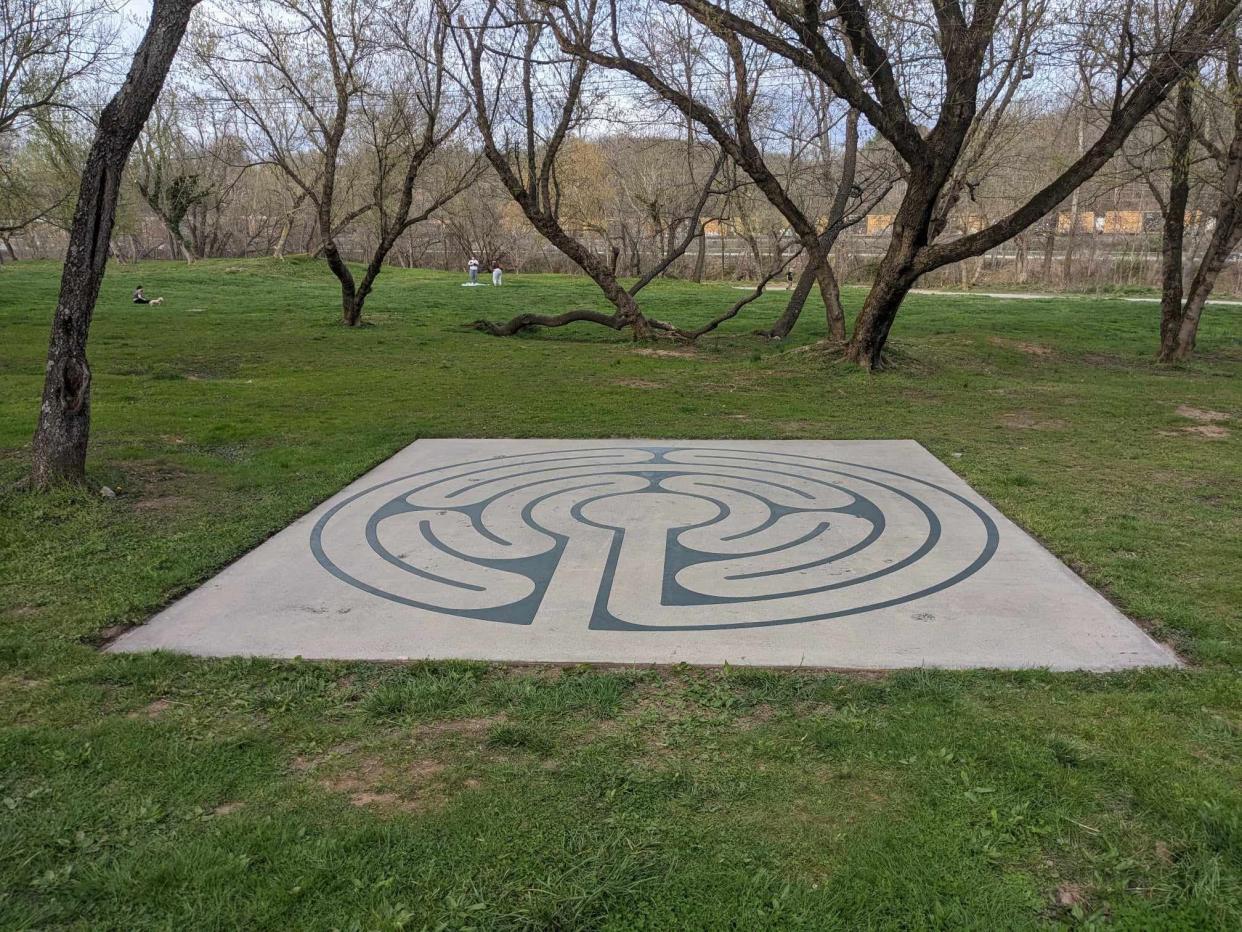
The French Broad River Park labyrinth is on a slab roughly 18x24 feet and just more than 17 feet in diameter, according to Hunner.
Pete Wall, assistant director at Asheville Parks and Recreation, said in an email the slab was intended to display art and exhibits but had been vacant for nearly 20 years.
Wall said the city seeks ways to improve parks, designed to provide gathering spaces and amenities for the community and celebrate cultures, arts, music, people and the beauty in the region.
“This opportunity to work with Chuck was a great way to improve an under utilized area to that effect. I appreciate Chuck's willingness to work with us and improve the park and quality of life for our residents," Wall said.
Hunner’s team completed the French Broad River Park labyrinth in about two weeks. He said a piece of this size typically takes two or three days but there were delays due to the artist’s schedule.
Hunner, who’s been in the labyrinth-making business for 18 years, said labyrinth installations are a team effort and Charlie Haden, Marie Pickle and Robert Haden assisted with the recent artwork.
“I scored the labyrinth pattern into the concrete with a circular saw then a diamond blade about an eighth of an inch deep,” Hunner said. “Then, I came back, and our team colored the line with the green polymer cement.”
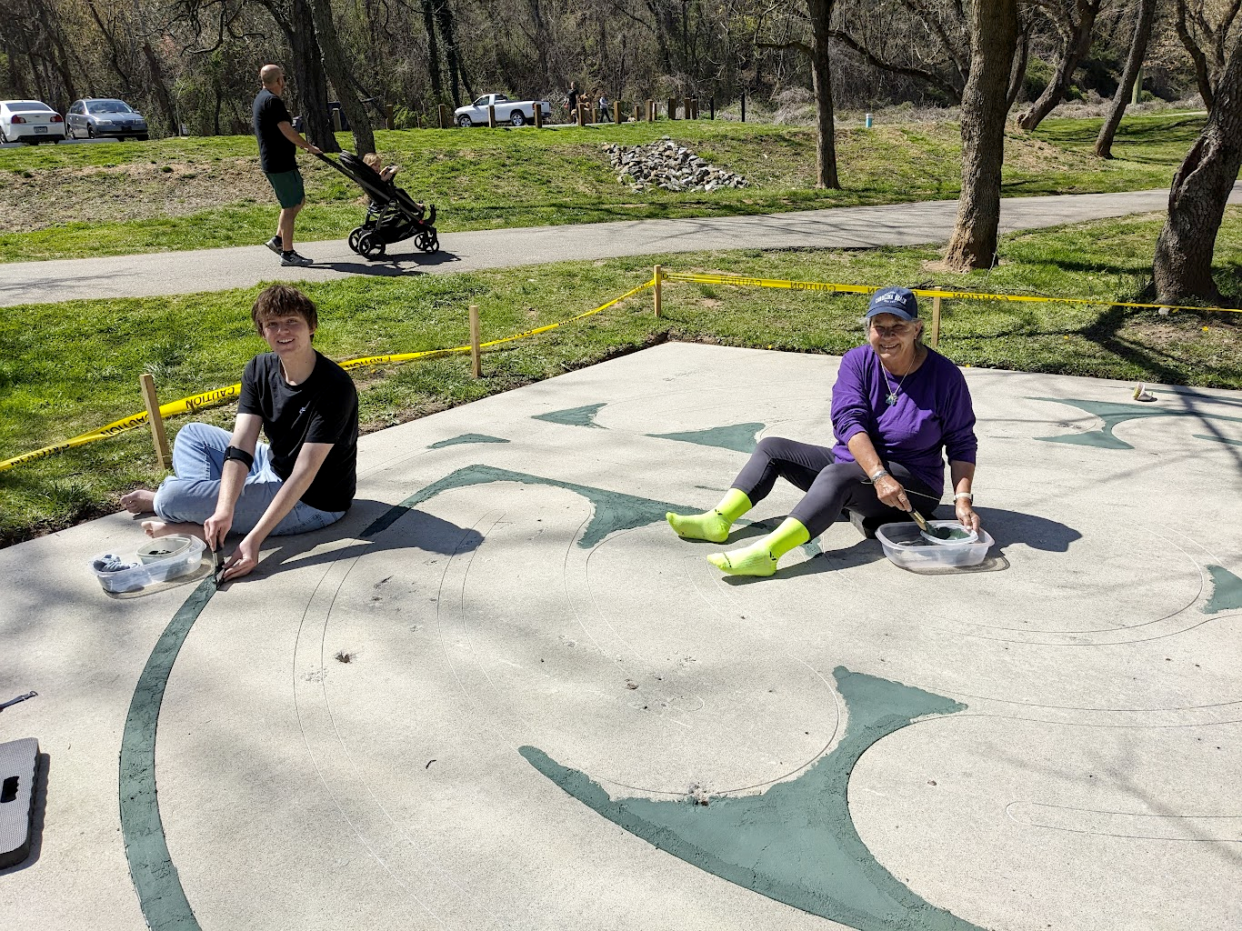
He said the scoring makes the green polymer cement look like it's inlaid into the bare concrete.
He said the labyrinth creates a place for people to walk in a contemplative space. There are three stages of a labyrinth walk in which “things that don’t matter will fall away” and once in the center the person may recognize solutions to issues, and on the way out, one may think of ways to apply the solutions to their lives.
“I’ve been a meditator for a long time,” Hunner said. “The first labyrinth I walked into was on a beach in Naples, Florida in 1998. I immediately felt a meditative feeling come over me, but my eyes were open, and I was walking, and I’d never felt that before.”
Hunner said his installation is intended to replace another labyrinth north of the Cotton Mill Studios in the River Arts District that has been fenced off from the public by the company developing the land.
Golden Spirit Labyrinths artists have been commissioned for small-to-large-scale labyrinths worldwide.
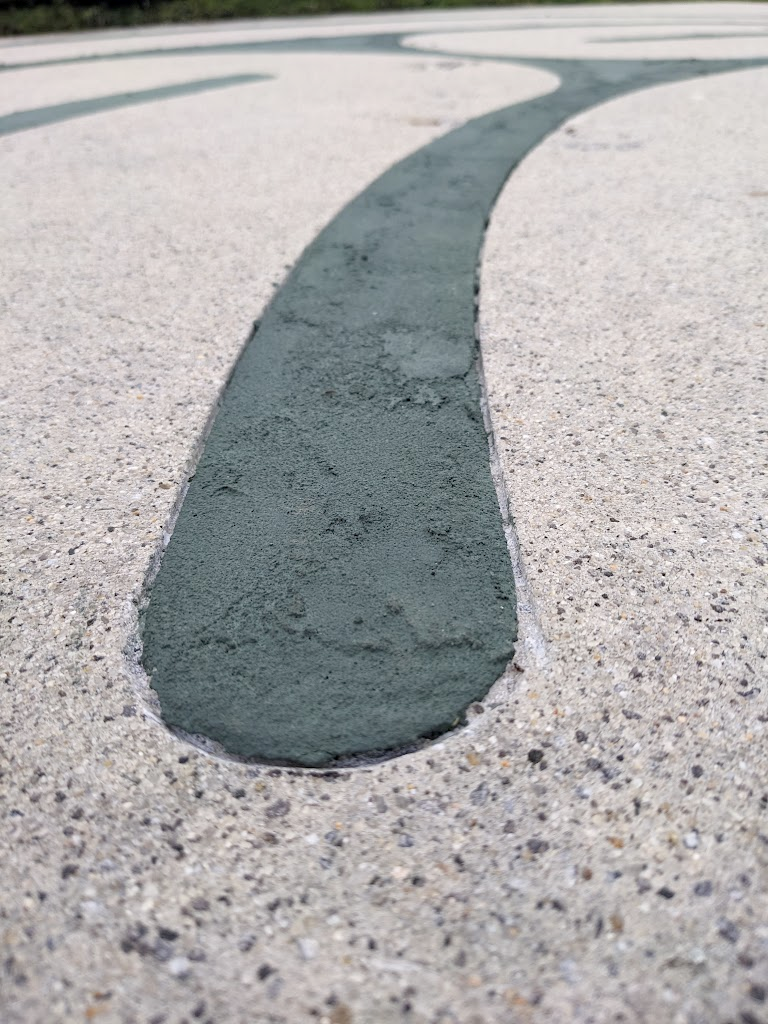
The first concrete labyrinth Hunner worked on was at Kanuga Episcopal Retreat Center in Kanuga in 2002. Other North Carolina labyrinths include Peace Haven Baptist Church in Winston, J. Iverson Riddle Developmental Center in Morganton, Fern Leaf School in Fletcher and St. Andrews Episcopal Church in Rocky Mount.
“I make healing pads,” People can carry intentions into the labyrinth with them and keep that intention gently in mind and allow the spaciness and consciousness that come with a labyrinth walk to surround that intention and often there will be some resolution — some feeling of completeness or a course of action that will occur to a person as a result of the labyrinth walk.”
On May 4, Hunner said he plans to celebrate World Labyrinth Day, an annual international event founded by The Labyrinth Society formed to stimulate “moving meditation for world peace” and as a “celebration of the labyrinth experience.”
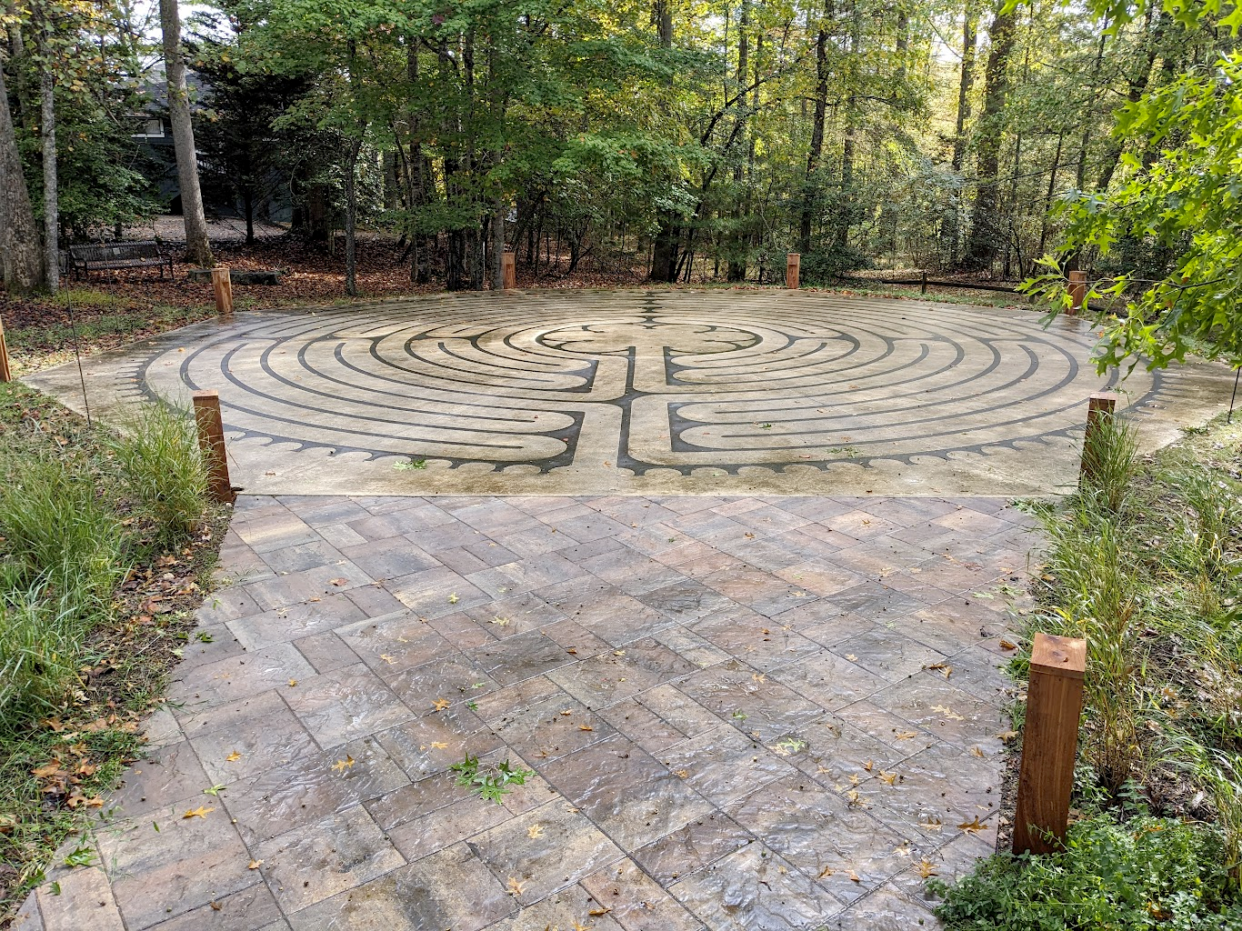
“When we think calmly, perhaps we can be a little more rational. Perhaps we can tap into our intuition a little more easily and heal from whatever wounds we have ― just make better decisions,” Hunner said.
For more about Golden Spirit Labyrinths, visit goldenspirit.com.
Stories you may have missed:
Handle with care: Dale Chihuly artist team moves new exhibit onto Biltmore Estate
'Chihuly at Biltmore' art exhibit opens with glass chandeliers, more at historic estate
Asheville's River Arts District among the best art scenes in U.S.? It's up for debate
Biltmore Village annual festival canceled for 2024: What to know
Tiana Kennell is the food and dining reporter for the Asheville Citizen Times, part of the USA Today Network. Email her at tkennell@citizentimes.com or follow her on Instagram @PrincessOfPage. Please support this type of journalism with a subscription to the Citizen Times.
This article originally appeared on Asheville Citizen Times: Asheville artist donates public art in French Broad River Park to city
